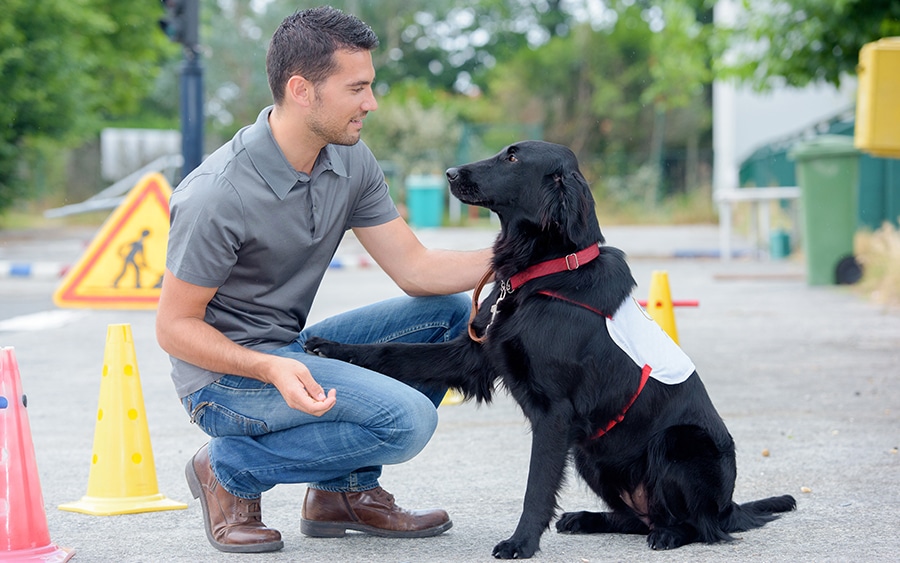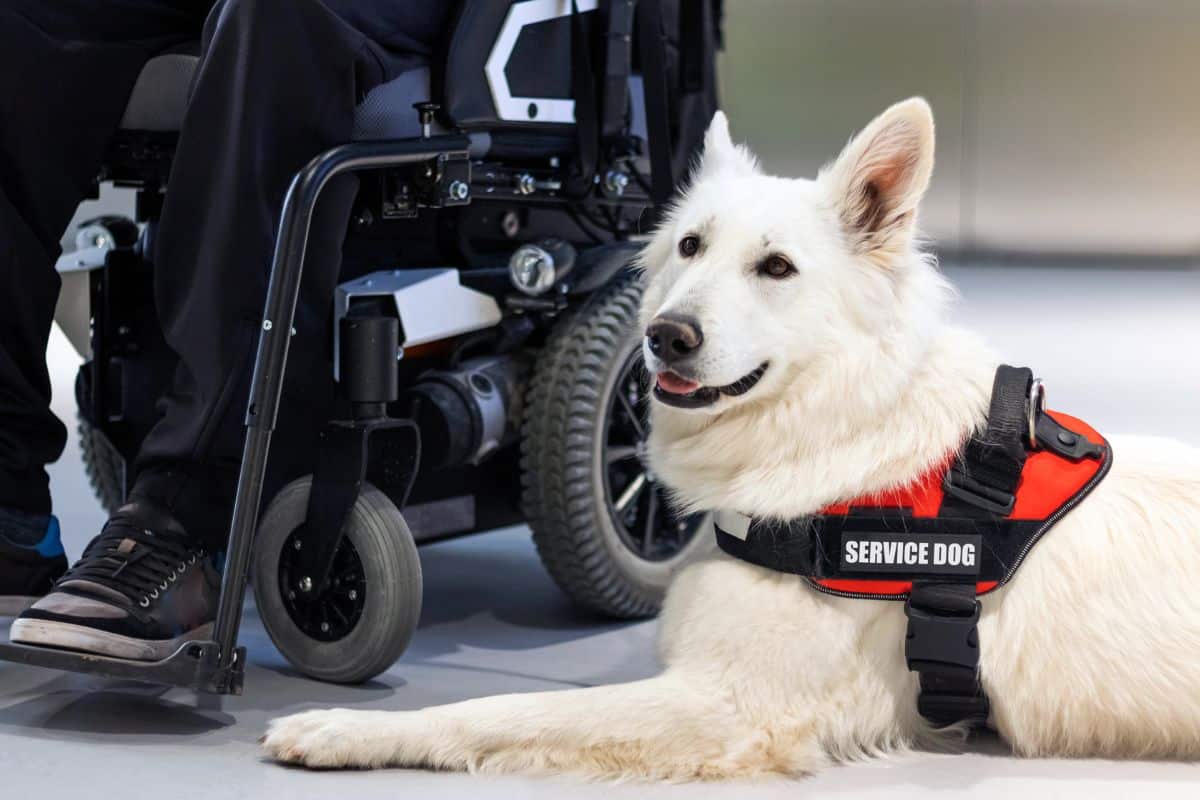Leading Canine Training Techniques Every Owner Should Know

Positive Support Techniques
Utilizing positive support techniques is crucial for effective pet dog training, as it fosters a relying on bond in between the fitness instructor and the pet dog. This approach focuses on satisfying desirable actions instead than punishing undesirable ones, producing an environment conducive to learning. Rewards can include treats, praise, or playtime, which encourage pets to repeat the behaviors that gain them these benefits.

Moreover, this technique improves the pet's enthusiasm for training sessions. They are a lot more engaged and receptive when pet dogs associate training with favorable experiences. Dog training. Beyond immediate actions modification, positive reinforcement encourages a joint relationship in between the canine and fitness instructor, minimizing anxiety and fear
To take full advantage of performance, it is essential to deliver rewards immediately, making sure the canine connects the habits with the support. Essentially, favorable reinforcement strategies not only yield better-trained pets but likewise promote an unified collaboration in between pet dog and proprietor.
Remote Control Training Technique
The clicker training method is an extremely effective method that develops upon the concepts of positive reinforcement by adding a distinct sound to mark desired behaviors. This approach utilizes a little handheld device that produces a clicking audio, permitting instructors to interact with their pets in a clear and prompt fashion. When a pet does a habits that the proprietor wishes to urge, the remote control is triggered, adhered to by an incentive, commonly in the type of deals with or praise.
The trick to successful remote control training hinges on consistency and timing. It is important to click at the specific moment the wanted habits happens, ensuring that the dog links the sound with the action and the subsequent benefit. This method not only improves interaction however likewise fosters a stronger bond between the dog and the owner, as it motivates engagement and communication throughout training sessions.
Clicker training can be related to a variety of habits and commands, from standard obedience to more complex tricks. Its adaptability and performance make it a popular method among specialist fitness instructors and family pet owners alike, leading the way for a responsive and trained canine friend.
Leash Training Fundamentals
Efficient leash training is important for ensuring a risk-free and pleasurable walking experience for both pets and their owners. Dog training. Chain training ought to start very early and be come close to with persistence and consistency. Start by choosing an ideal chain and collar or harness. A flat collar may function for some canines, while others might benefit from a harness that decreases drawing.
Present your dog to the chain gradually, permitting them to discover it in a comfortable atmosphere. Practice loose-leash strolling once see this site they are accustomed. This includes gratifying your dog for walking close to you as opposed to pulling ahead. Use deals with and appreciation to reinforce preferred behavior, and be sure to stay assertive and calm.
If your canine starts to draw, quit walking immediately. Wait until they go back to your side prior to returning to. This shows them that drawing does not result in progress. Additionally, technique numerous strolling environments to help your dog adapt to diversions.
Routine technique will strengthen your pet's understanding of leash etiquette. Bear in mind that leash training is an ongoing process; perseverance and uniformity will produce the most effective outcomes, fostering a favorable experience for both you and your canine friend.
Socialization Methods
Socialization is a vital facet of pet training that must ideally begin during puppyhood yet can be helpful at any kind of age. Efficient socialization aids pets establish self-confidence and minimizes the possibility of behavioral issues. To carry out effective socializing strategies, reveal your canine to a range of atmospheres, individuals, and other animals.
Begin with regulated setups, such as young puppy classes or organized playgroups, where young dogs can interact safely. Slowly present your pet to new experiences, consisting of various sounds, surfaces, and activities. Make certain these experiences are fulfilling and favorable to establish a sense of safety.
For adult pets or those lacking direct exposure, begin with low-stress situations. Short, positive interactions with tranquil pets and friendly people can create positive associations. Utilize treats and appreciation to enhance preferable behaviors during these experiences.

Uniformity and Patience
Identifying the significance of consistency and patience in pet dog training useful source is crucial for achieving long lasting results. Training a pet is a progressive procedure that requires an organized method and unwavering commitment from the owner. Each command or behavior must be strengthened constantly to aid the canine understand what is expected of them. Inconsistent training can result in confusion, making it challenging for the canine to realize commands or actions, ultimately preventing progression.
In addition, patience is a vital element of reliable training. Canines, like human beings, discover at their very own pace. Some may comprehend concepts swiftly, while others may take longer. It is essential for owners to stay supportive and calm, strengthening positive actions without turning to disappointment or punishment. This cultivates a relying on connection in between the dog and owner, motivating a much more passionate and ready student.
To grow uniformity and perseverance, develop a normal training regular, utilize the same commands, and ensure that all relative use the very same training concepts - Dog training. By doing so, you develop a steady environment conducive to discovering, enabling your pet dog to establish and prosper into a mannerly companion
Verdict
Finally, efficient canine training techniques, such as positive support, remote control training, and proper chain training, are vital for fostering a healthy owner-dog connection. In addition, executing socializing strategies and maintaining uniformity and perseverance throughout the training process adds significantly to a pet dog's overall well-being. By integrating these techniques, pet proprietors can facilitate the development of well-adjusted, loyal family pets, eventually boosting the lifestyle for both the owner and the dog.
Among the most prominent methods are favorable support, remote control training, and leash training, each offering distinct benefits that contribute to a mannerly pet dog. As we check out these have a peek at these guys basic strategies, it ends up being obvious that mastering their nuances can significantly affect the training experience and the canine's total behavior.Making use of favorable support strategies is vital for effective pet training, as it cultivates a relying on bond between the pet and the instructor.In final thought, efficient pet dog training methods, such as favorable reinforcement, remote control training, and proper leash training, are necessary for cultivating a healthy owner-dog connection. By incorporating these approaches, dog owners can assist in the growth of well-adjusted, loyal pets, inevitably improving the top quality of life for both the canine and the owner.